
Each season has its own unique charm, and determining the best time to visit Japan can be quite challenging since it depends on individual preferences and the need to choose a destination after setting a vacation schedule.
Nevertheless, when planning a trip, there are many factors to consider.
Factors such as interests, desired experiences, travel goals, budget constraints, and the timing of vacations or holidays can all influence the ideal time to travel.
What should you think about first when planning a trip to Japan? Perhaps considerations such as expenses, weather, peak or off-peak seasons, and your vacation or holiday schedule come to mind.
In Japan, summer is usually seen as the off-peak season due to its intense humidity and heat.
Despite this, it becomes a peak period for Koreans traveling overseas, considering that Korea and numerous Asian nations have their summer vacations at this time.
The best time to visit Japan, especially concerning weather, is typically known to be spring (March to May) and Autumn (September to November). Other seasons are less crowded, but in summer there are incredibly Traditional Festivals (Omatsuri) and Fireworks Festivals (Hanabi) in various cities, making it attractive. In Winter, activities like hot springs, skiing, and snowboarding draw tourists.
Considering the multitude of factors to weigh, including season, weather, Japanese calendar holidays, and local information, Here is a comprehensive guide on the best time to travel to Japan. I believe this guide aims to be helpful for both beginners and seasoned Japan travel enthusiasts alike!

Seasons of Japan
Japan is a nearby country with a climate similar to Korea, making it an excellent travel destination throughout the year.
With a climate resembling that of Korea and distinct seasons, Japan offers a variety of attractions with each changing season. As you’ll discover when you visit, you can enjoy both peak and off-peak seasons, seasonal foods, and various festivals.
For those who wish to experience specific foods or festivals, it’s advisable to plan your trip with a focus on the timing of events rather than just considering the weather.

#1 Highlights of Japan’s Four Seasons
Spring is renowned for its Cherry Blossom Season. If luck is on your side, you can enjoy Hanami (cherry blossom viewing) without worrying about crowds, making it a popular choice for tourists, especially those visiting Japan from afar for their honeymoon.
Summer is the season with the most diverse festivals throughout the year. You can enjoy various festivals across the country and seize opportunities to immerse yourself in nature through mountain hiking or enjoy the sea in beautiful coastal areas.
Autumn, with its vibrant foliage and pleasant weather, is considered one of the best seasons for travel, alongside spring.
Winter is well-known among sports enthusiasts as a world-class destination for skiing and snowboarding. It’s also a season where you can experience the best hot springs, taste Japan’s seafood, and rejuvenate your body and mind.
#2 Exploring Japan by Month
- January (after the year-end holidays) and February are generally recommended for travelers who don’t mind the cold, as these months tend to have fewer tourists, excluding the Lunar New Year holidays.
- Late March and early April mark the cherry blossom season (Hanami), making it one of the busiest and relatively expensive times of the year.
- From mid to late May, the weather is ideal for a trip throughout Japan.
- June marks the transition into summer and may also be the onset of the rainy season.
- July and August, it is very hot and humid, but you can enjoy a lively atmosphere with various festivals.
- From mid to late September, there are fewer tourists compared to summer or fall. However, it’s important to be mindful of typhoon forecasts.
- October ~ November are peak seasons with pleasant autumn weather, especially in November when the fall foliage season attracts many visitors.
- Early December is a time worth enjoying if you can tolerate a bit of chill, but from mid-December onwards, it becomes crowded due to the year-end season.
<Travel Tip>
Personally, I recommend the best time to travel to Japan to be either late August to early September or late February to early March.
This is because these seasons tend to avoid the peak tourist season, allowing for a more relax travel experience.
“Are you embracing the slow life? If so, it’s advisable to avoid peak seasons.”
#3 How Japan’s geography affects its seasons and weather.
Understanding Japan’s weather is easier when you know some basic geography. Although Japan might look small on a map, it’s actually quite big, much larger than Korea.
Because Japan is a long, thin island from north to south, the weather and seasons vary depending on where you are. From the cold Hokkaido in the north to the warm Okinawa in the southwest, you get different weather in different places.
Okinawa, for example, is warm all year round. Even in winter, it’s not too cold. On the other hand, Hokkaido has a long, very cold winter, colder than many other places.
Major cities like Tokyo, Osaka, and Kyoto also experience distinct seasons. Generally, the south and west are a bit warmer, while the north and east are cooler.
Knowing these differences can help when planning your trip. Consider what season you like, what kind of weather you prefer, and how much you care about changes in the weather. This way, your trip to Japan can be more enjoyable.
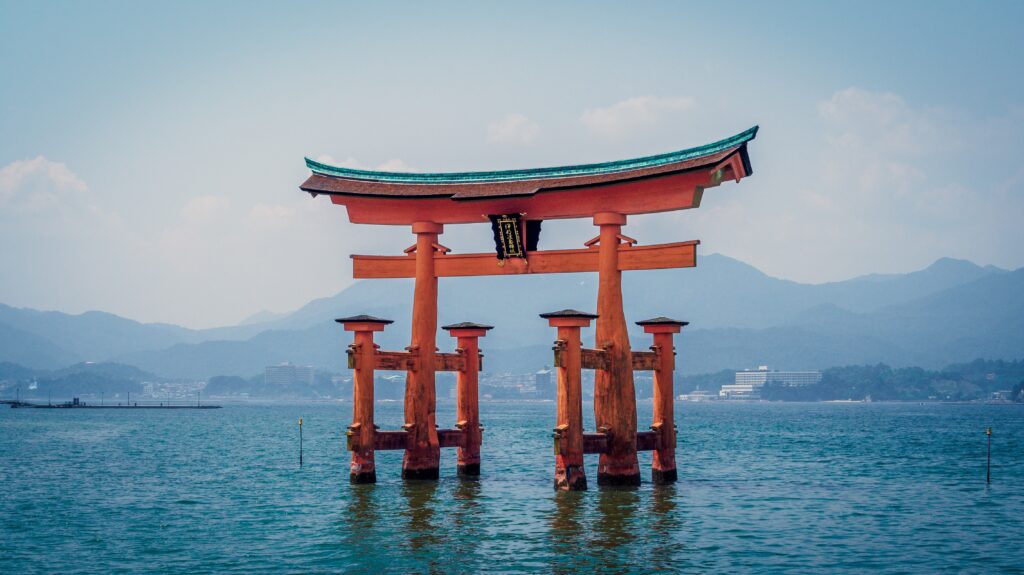
Holidays and Travel Peak Seasons in Japan
Although travel, in general, tends to be that way, completely avoiding crowds at tourist spots in Japan can be challenging.
If you make a bit of a special effort to travel during ‘quiet’ times, such as early mornings, or explore hidden gems that may not be famous tourist destinations, you can enjoy a more relaxed journey.
For those seeking mental healing or desiring a tranquil and leisurely solo trip, avoiding peak seasons is the best choice!
#1 Peak Travel Seasons in Japan
During this period, accommodation prices soar, and it can be challenging to secure reservations, especially for the essential long-distance travel on the Shinkansen.
Be sure to pay attention as Shinkansen seats, both reserved and non-reserved, tend to fill up quickly.
It’s advisable to consider that reserved seats are often fully booked in advance, and for non-reserved seats, finding a guaranteed spot can be challenging, resulting in standing during the journey.
- New Year: From around the last week of December to the first week of January.
- Chineses New Year (Korea Also): The exact date varies every year but typically falls at the end of January or in February.
- Cherry Blossom (Sakura) Season: From late March to early April.
- Golden Week: Usually an extended holiday period held in the first week of May.
- Obon: A long holiday held in mid-August.
- Public Holidays: Please check the list of Japanese public holidays below.
#2 Japan’s Holidays
Japan, a country that loves travel and often utilizes weekends and holidays for domestic trips.
It seems that there are relatively many three-day weekends, possibly due to a strict substitute holiday system.
※The approximate dates are accurate, but please note that there may be slight changes each year.
★Not Recommended Period★ is the time when travel within Japan is most active, so it might be a good idea to avoid it. (Especially Golden-weeks, O-Bon)
- December 31st ~ January 3rd: Year-End and New Year Holidays
- January 1st: New Year’s Day (O-Shogatsu)
- January 8th: Coming of Age Day (Seijin no hi)
- February 11th: National Foundation Day (Kenkoku kinenbi)
- February 23rd: Emperor’s Birthday (Current Emperor’s birthday; the holiday changes if there’s a change in the Emperor.)
- March 21st: Vernal Equinox Day (Shunbun no hi)
- April 29th to May 5th: Golden Week – Peak Travel Season ★Not Recommended Season★
- April 29th: Showa Day (Showa no hi)
- May 3rd: Constitution Memorial Day (Kenpo kinenbi)
4th: Greenery Day (Midori no hi)
5th: Children’s Day (Kodomo no hi) - July 17th: Marine Day (Umi no hi)
- August 11th: Mountain Day (Yama no hi)
- August 12th ~ 16th: O-Bon Period (Similar to Korea’s Chuseok) ★Not Recommended Period★
- September 18th: Respect for the Aged Day (Keiro no hi)
- September 23rd: Autumnal Equinox Day (Shubun no hi)
- October 9th: Health and Sports Day (Taiiku no hi)
- November 3rd: Culture Day (Bunka no hi)
- November 23rd: Labor Thanksgiving Day (Kinro kansha no hi)
<Travel Tip>
Holidays in Japan, wherever you go can get crowded. On these days, transportation can be more complex than usual. Especially for the Shinkansen, if you haven’t booked in advance, you might encounter challenges, so it’s a good idea to quickly buy Shinkansen tickets once your schedule is set.
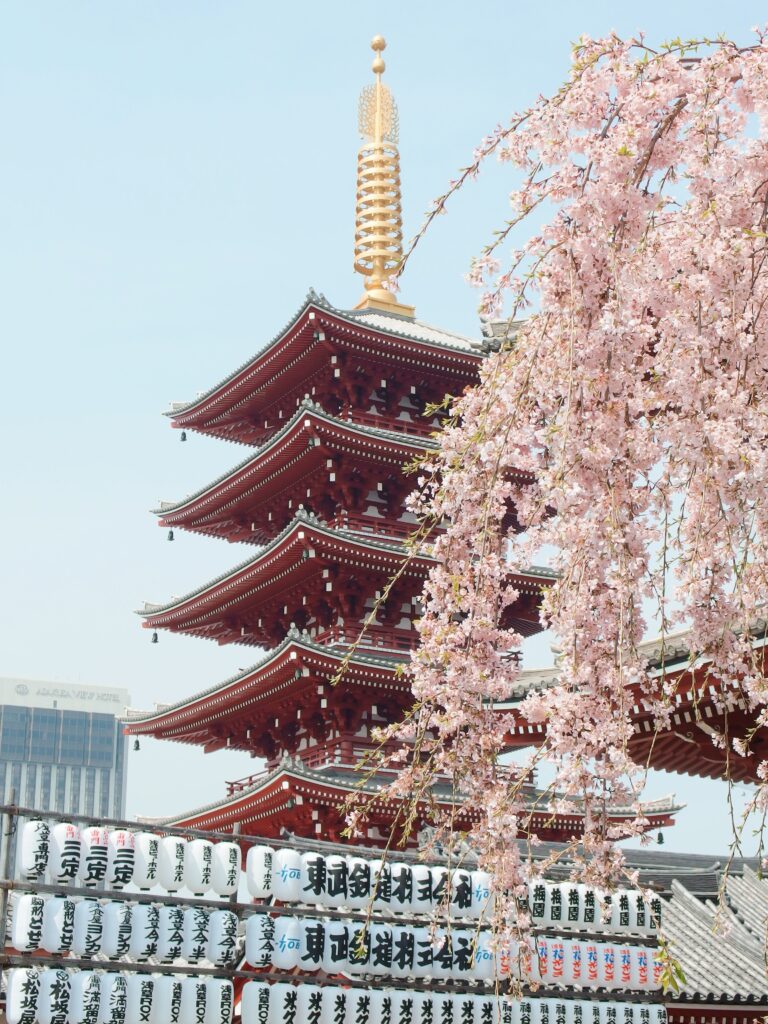
Japan’s Spring
As the island stretches from South to North, the seasons are influenced by its geography. Generally, it’s from mid-March to May, although there are regional variations, you can enjoy refreshing spring weather. Spring weather can be a bit unpredictable.
The temperature is around 4~18°C, similar to Korea, and there are days when you still need a winter coat and days when a light sweater is sufficient.
Personally, I recommend warm sweaters for cold weather and light windbreakers for rain preparation.
It’s the most vibrant season, spring, and the symbol of spring is Cherry Blossoms! They usually bloom between late March and early April.
The Sakura Blooming period also varies by region, as long as the long distance from Okinawa to Hokkaido. Although the information below is not the latest, a Sakura Blooming calendar is published every year.
Since it blooms around a similar time each year, it’s highly recommended to check out.

Spring is the busiest season of the year, and it’s the time when international tourists flock to Japan the most.
The beauty of fully bloomed cherry blossoms is truly charming, but predicting whether they will bloom in line with the cherry blossom calendar is uncertain due to the workings of nature.
Faced with the unpredictable reality of nature, many people sometimes don’t get to experience as many fully blossomed cherry blossoms as they hoped… It’s one sad point.
Some deliberately plan their travels around the cherry blossom season, but since nature is unpredictable, cherry blossoms can bloom early in some years and late in others.
If luck is on your side, they may linger on the trees for a few weeks, but in other years, strong winds or rain may cause them to scatter early. If you can enjoy such weather and the unpredictability of nature as part of your journey, it will be a more satisfying trip.
Cherry blossom season is peak season! Many people want to avoid it. You know, those who find it challenging to navigate through the crowded airports. Let’s explore why some people want to avoid the cherry blossom season!

Why I want to escape Cherry Blossom Season
The Cherry Blossom Season is truly beautiful, and the fresh spring weather creates an ideal environment for travel. However, at the same time, there arises a question of whether one must travel during the peak season, considering the costs and overwhelming crowds associated with peak season travel.
Apart from the unpredictability mentioned earlier (weather and the workings of nature), the Cherry Blossom Season is a highly commercialized period. Travel expenses are higher than during the off-peak season!
The Cherry Blossom Season is always an ideal time to visit, but due to the rapid increase in tourists during this period, there are many considerations to take into account, especially regarding expenses.
The peak of blooming extends from mid-March to mid-April, attracting crowds comparable to the summer vacation season in Europe. So, what will happen?
●Stress from Crowded Conditions: Feeling stressed due to large crowds.
●Budget-Friendly Accommodation Choices: Choosing affordable hotels or ryokans for stay.
●High Costs in Peak Season: Increased expenses for accommodation during busy times.
●Enhanced Planning Ahead: Giving more attention to planning ahead for a experience.
Lack of Accommodation Facilities in Japan
Tourists begin asking about and booking for cherry blossom season a year ahead.
What’s more surprising is how quickly hotels and ryokans get fully booked. (Luckily, not all places accept reservations this early. Expect lots of cancellations/changes.) Considering Airbnb instead of traditional accommodations is also an option.
Sadly, there aren’t enough hotels. Kyoto, in particular, has a severe room shortage compared to the demand, so if you’re planning to visit Kyoto, you should book your hotel soon.
Japanese hotels, in general, don’t have many rooms. This is just the usual situation, and of course, prices go up during peak times.

Japan’s Golden-week
Attention Point I don’t recommend it personally because of the crowds.
While it may seem like I focused only on the drawbacks of the peak season, there are clear reasons why many people are drawn to it! Japan’s cherry blossoms are globally renowned for their beauty.
However, unless you have no other option, it might be a good idea to steer clear of spring peak season travel. (Of course, this is just my personal opinion!)
Another season to avoid is the Golden Week holiday. Alongside the year-end and August Obon holidays, Golden Week is when Japanese people travel the most.
- The Top Three Busiest Seasons in a Year!
1. Year-End Season (Dec 28th ~ Jan 5th)
2. Cherry Blossom Season (April ~ May)
3. Golden Week Season (End of April ~ Early of May)
Golden Week typically starts at the end of April and stretches into the first week of May (varying slightly each year).
Since many Japanese people travel during this time, it can be an expensive period for tourists in Japan.
Despite Japan being a country known for festivals, Golden Week doesn’t particularly celebrations.
Japan’s May includes Children’s Day and encourages family-oriented activities.
Golden Week encompasses 2-3 public holidays, including Children’s Day on May 5th.
While traveling during Golden Week is possible, if you can adjust dates slightly, it might be worth reconsidering. Especially for first-time travelers to Japan, it might be more challenging and tiring than enjoyable.
Transitioning from May to June, Japan’s pleasant spring weather gradually gives way to the warmer and more humid summer.
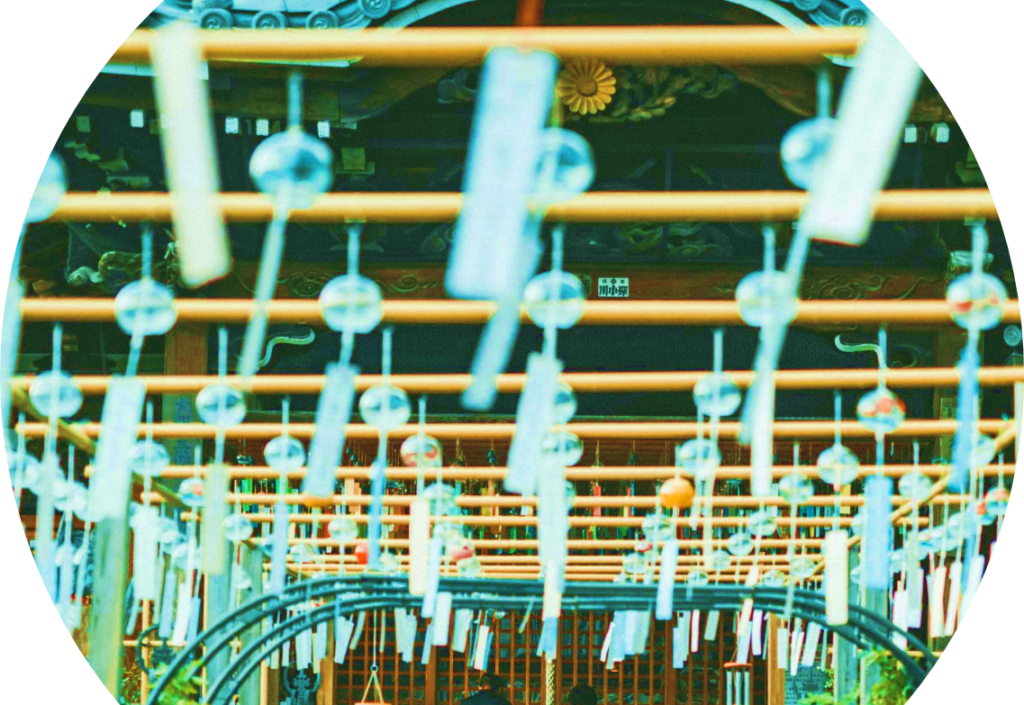
Japan’s Summer
Attention Point For those who struggle with large crowds, consider visiting Japan in the summer.
Summer in Japan spans from July to mid-September, it can get hot and humid with an average temperature of 21-36°C.
Due to Japan’s north-to-south geography, there’s a notable temperature difference between the northern region of Hokkaido and the southernmost Okinawa.
July and August are the hottest and most humid months, making it less suitable for those who dislike hot weather.
Despite the intense summer heat, it’s considered Japan’s liveliest and most passionate season.
Japan hosts numerous festivals, and the summer festivals, known as “Omaturi,” are visually stunning with vibrant patterns and colors, showcasing long-standing traditions.
The atmosphere is lively as people come together to embrace the hot summer.
Festivals happen year-round across the country, but in the summer, notable ones include Kyoto’s Gion Matsuri, Osaka’s Tenjin Matsuri, Aomori’s Nebuta Matsuri, and Shikoku’s Awa Odori Matsuri.
Both big and small festivals are held in towns and villages nationwide.
On summer weekends, festivals become more concentrated, and there might even be a Matsuri near your accommodation. It’s a time to discover and join Japan’s festivals you may not expected.
Additionally, fireworks festivals are held nationwide. Hanabi (花火, Fireworks) is a unique Japanese festival, and the Hanabi Taikai (花火大会, Fireworks Festival) is a widely recognized event among global fireworks enthusiasts.
While Tokyo’s Sumidagawa fireworks are famous, considering fireworks festivals happen all over the country during the summer, try to find and spend travel time for one of them.

I’m eager to experience festivals and fireworks in Japan.
However, with the hot and humid weather, considering the high temperatures that can make going out uncomfortable, is summer a good time to travel there? Let’s check it out.
How hot and humid is Japan’s summer?
When you visit Japan in the summer, one major concern is the heat and humidity. (More than what you imagine now.)
Tokyo’s summer is like Korea’s but hotter and more humid.
Popular places like Osaka can be even hotter and more humid than Korea. People often prefer going out in the cooler hours around sunset or late evening.
Kyoto, being warm, can be challenging, especially for those not used to such weather or sensitive to heat. This can affect both physical and mental well-being, potentially diminishing the enjoyment of the trip.
Despite the discomfort of summer weather, whether the trip is worthwhile depends on the individual. It might require some flexibility to appreciate the unique aspects of summer.
Fortunately, even for those not used to the heat, there are ways to experience a more refreshing and enjoyable Japanese summer!

Tips for Enjoying Summer in Japan
Like I said earlier, Japan is a long country from really north (Hokkaido) to the far south (Okinawa), and because of that, different places have different kinds of weather.
So, even if it’s hot in some places during the summer, there are cooler spots, especially as you go up north. This means you can pick a place with the kind of weather you like when you visit Japan!
Also, in the middle part of Japan, places with mountains like the Alps are way cooler and less humid than big cities like Tokyo or Kyoto.
So, if you want to go to Japan in the summer and avoid super-hot weather, spending more time in places like the Alps, Tohoku, or Hokkaido is a good plan. These places are still summer, but it’s more comfortable than other places.

Rainy Season and Typhoons in Japan
In Japan, the rainy season called “Tsuyu, 梅雨” is milder than in many other Asian countries. It usually happens from early to mid-June, lasting until mid-July.
Rain doesn’t pour every day, but some days can be consistently rainy or cloudy.
Typhoons occur between May and October, mainly peaking in late summer.
Okinawa and the southwest are more prone, but even Tokyo might be affected. Typhoons rarely lead to cancellations in most regions except for Okinawa, where travel plans might be impacted.
Summer lasts until September, and Japan transitions into autumn as October approaches.
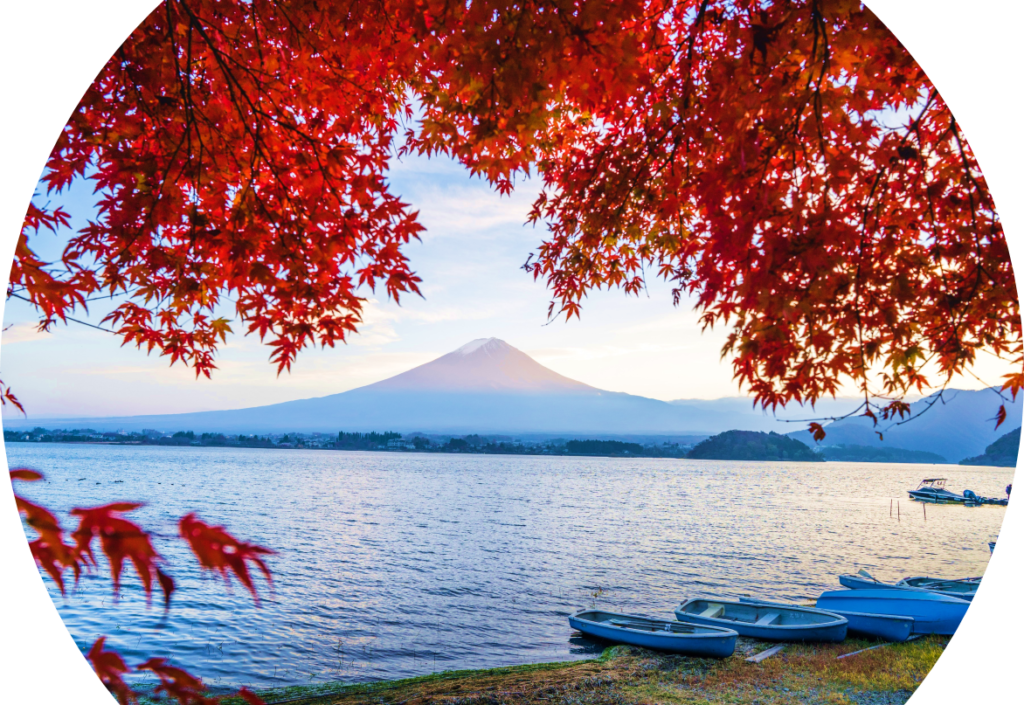
Japan’s Autumn
From mid-September to early December, it’s autumn in Japan. Depending on the region, there can be significant temperature differences and weather changes.
Autumn is known as an excellent time for traveling in Japan, following the cherry blossom season in spring, with average temperatures ranging from approximately 10 to 21°C.
The pleasant temperatures and clear skies, especially in late autumn, make fall famous for its beautiful foliage, known as “Koyo, 紅葉”. Both the cherry blossom season in spring and the fall foliage season are peak travel times.
Autumn is also considered a season for travel and reading. The weather is delightful for exploring regardless of when you visit.
Although autumn begins in late September, it still carries the lingering warmth of summer during the day, and there are still some hot days. This period experiences significant temperature daily.
By October, you can sense the full arrival of autumn.
October is a peak season for traveling in Japan, but when compared month by month, it’s not necessarily more crowded than November. Once November arrives, you can fully experience autumn, and foliage can be seen throughout Japan.
Many people in Japan visit mountains, valleys, and parks for foliage viewing. While it may not be as crowded as the cherry blossom season, it’s still essential to consider the potential crowds everywhere.
It’s advisable to purchase tickets, such as for the Shinkansen, in advance.
Japan’s Autumn Travel Tip
If you want to avoid the busiest time in October and November, let’s to think about visiting in early December.
That’s when there are fewer tourists, and some places still have pretty colored leaves. So, it might be a good idea to plan your trip then!
Taking a bath in an outside hot spring while looking at the colored leaves is a must-do in Japan! November is a really nice time!
Looking at the colored leaves is kind of like the cherry blossom season. It’s beautiful, but there are lots of people, not enough places to stay, and things are more expensive, so it can be a bit tricky to plan.

Japan’s Winter
Winter in Japan starts around December and lasts till February or early March.
Temperatures usually range from -2 to 7°C, but it can differ a lot depending on where you are. Places like Tokyo and the western parts are warmer.
Winter in Japan can be less crowded, making it a good time for visiting and enjoy the winter charm.
Usually, winter is a quieter time for travel, just like in many other places around the world.
Many prefer visiting Japan during peak seasons like cherry blossom in spring or autumn. In the USA or Europe, this coincides with school breaks. But for Asian countries, choosing summer or winter for a Japan trip might be best!
Winter is perfect for skiing and snowboarding enthusiasts due to Japan’s snowy mountains. Famous spots like Hokkaido and the Japanese Alps makes fantastic skiing.
Ski resorts are well-developed in mountainous areas from Tokyo to Hokkaido.
Winter in Japan also means enjoying hot springs. Although available year-round, nothing beats soaking in an outdoor hot spring amidst snowy mountains!
If you’re planning your first trip to Japan, don’t miss experiencing an outdoor hot spring in the winter!
Japan’s Winter Travel Tip
Winter typically sees fewer tourists in Japan, but there are some important things to note.
Around New Year, there’s an unexpected influx of inbound travelers, including tourists and returning Japanese residents. It’s wise to consider potential downsides during this time.
The New Year holiday spans one to three weeks globally, leading to crowded places as Japanese residents visit family or host relatives from abroad. Visitors also come to celebrate the New Year.
Kyoto’s traditional streets get crowded with tourists from Japan and around the world.
While Japan’s New Year celebrations makes a unique atmosphere, those seeking peaceful travel might want to avoid this time.
Accommodations are pricier due to high reservation rates. Luxurious ryokans often need reservations a year in advance. Also, many shops close from late December to early January.
Previously, most restaurants closed during this time, but some are now staying open.
End
Japan is a great destination to travel to at any time of the year. It’s a country known for its travel-friendliness. I hope you plan a trip that suits you and enjoy a delightful journey.
And hope this information has been helpful. Thank you!









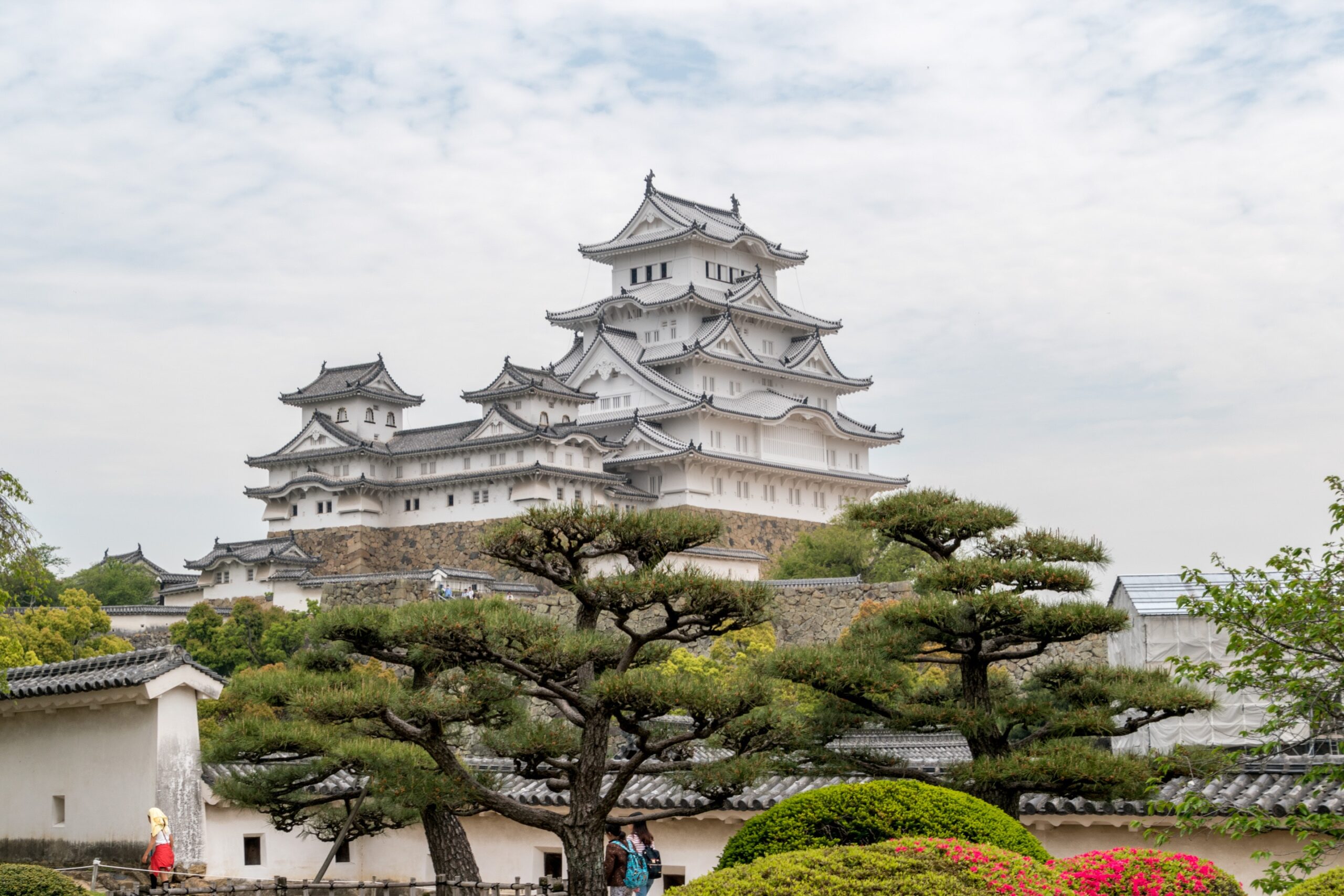
3 thoughts on “When is the best time to visit Japan?”